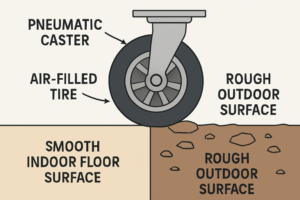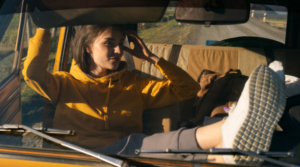In the digital era, the ability to search for images effectively has become an essential skill for students, researchers, marketers, designers, and casual internet users alike. While text-based searches rely on keywords and phrases, image search focuses on visual content — a field that has grown exponentially due to the increasing volume of multimedia on the internet. Image search techniques are methods and strategies used to locate, analyze, and utilize visual content efficiently. These techniques involve understanding search engines, reverse image tools, metadata utilization, and advanced filtering to extract relevant information. Mastering these skills can save time, improve accuracy, and support decision-making in professional and personal contexts.
1. Understanding Image Search
Image search is the process of finding images online using specific tools and techniques. Unlike traditional text search, which scans text content for keywords, image search involves analyzing visual elements, metadata, and context. Modern search engines, such as Google, Bing, and Yahoo, use sophisticated algorithms to recognize images, match similar visuals, and provide relevant results. Image search can be broadly classified into three categories:
- Keyword-based image search: The user enters a descriptive keyword, and the engine returns images associated with that keyword. For example, searching “sunset over mountains” retrieves relevant visual content.
- Reverse image search: The user uploads an image or provides a URL to find similar images, origins, or higher-resolution versions. This is useful for verifying sources or identifying unknown subjects.
- Content-based image retrieval (CBIR): Uses visual features such as color, texture, and shape to find matching images in a database. CBIR is often used in research, e-commerce, and digital libraries.
Understanding these categories helps in choosing the right approach depending on the goal of the search, whether it’s finding a specific image, verifying authenticity, or exploring similar visuals.
2. Keyword-Based Image Search Techniques
Keyword-based image search remains the most common method due to its simplicity and accessibility. However, refining search queries with advanced strategies can significantly improve accuracy.
a. Using Descriptive Keywords
The specificity of keywords plays a critical role in narrowing down results. Generic terms often return millions of irrelevant images, while precise descriptions increase relevance. For instance, instead of searching “dog,” using “golden retriever puppy in garden” improves the likelihood of finding the desired image.
b. Utilizing Search Operators
Most search engines support operators that refine image search results:
| Operator | Purpose | Example |
|---|---|---|
| Quotation marks (” “) | Search exact phrase | “modern architecture skyline” |
| Minus (-) | Exclude terms | “rose -flower” to exclude flower images |
| OR | Include multiple alternatives | “cat OR kitten” |
| Site: | Restrict search to specific site | “site:pexels.com sunset” |
These operators help users filter unwanted results and focus on specific content types.
c. Leveraging Filters
Filters offered by search engines allow further refinement:
| Filter | Purpose |
|---|---|
| Size | Large, medium, or icon-sized images |
| Color | Black & white, transparent, or specific color |
| Type | Clipart, GIF, photo, line drawing |
| Time | Recent uploads or images from specific periods |
| Usage Rights | Free to use, share, or modify |
Filters are particularly useful for professional purposes where copyright compliance or high-quality visuals are essential.
3. Reverse Image Search Techniques
Reverse image search is a powerful technique for discovering information about an image without relying on text. It helps verify authenticity, locate the original source, or find similar images.
a. How Reverse Image Search Works
Reverse image search engines analyze the uploaded image’s visual content — including shapes, colors, textures, and patterns — and match it with indexed images across the web. Metadata such as file name, resolution, and EXIF information may also be utilized.
b. Tools for Reverse Image Search
| Tool | Description | Advantages |
|---|---|---|
| Google Images | Upload or drag image for matching results | Widely indexed, reliable, supports multiple formats |
| TinEye | Focuses on image tracking and source identification | Good for finding copyright usage and original sources |
| Bing Visual Search | Microsoft’s platform for visual content | Includes shopping and object recognition features |
| Yandex | Russian search engine with robust image matching | Effective for face recognition and fashion items |
c. Practical Applications
Reverse image search is useful in various contexts:
- Verifying authenticity: Detect manipulated or fake images shared online
- Copyright compliance: Identify if an image is copyrighted before reuse
- E-commerce: Find products from images for online shopping
- Research: Locate similar visuals, diagrams, or artwork
By mastering reverse image techniques, users gain control over image validation and usage, reducing the risk of misinformation.
4. Metadata and EXIF-Based Image Search
Images often contain metadata — additional information embedded in the file. This data includes camera settings, date, location, and even editing software used. Using metadata-based techniques can refine searches, especially for professional photography or investigative purposes.
a. Understanding EXIF Data
EXIF (Exchangeable Image File Format) data includes:
| Field | Description |
|---|---|
| Camera make/model | Device used to capture the image |
| Date/time | When the photo was taken |
| GPS coordinates | Geographical location of capture |
| Aperture & Shutter Speed | Technical photography settings |
| Software | Editing tools used |
b. Searching Using Metadata
Some platforms and software allow searching images based on EXIF data. This is particularly useful in:
- Forensic analysis: Tracing photo origin or detecting manipulation
- Photography databases: Finding images with specific technical parameters
- Content organization: Filtering large collections of personal photos
Understanding metadata allows deeper insights beyond the visual content itself, enhancing research and professional workflows.
5. Color and Object-Based Image Search Techniques
Modern image search tools incorporate artificial intelligence (AI) and computer vision to identify images by color, shapes, or objects. These content-based image retrieval (CBIR) techniques are valuable for designers, marketers, and visual researchers.
a. Color-Based Search
Color-based search allows users to filter images according to dominant or specific colors. For instance, searching for a “blue car” or “red flower” retrieves images matching the color criteria. Tools like Google Images and Shutterstock provide color filter options, improving visual consistency in projects.
b. Object Recognition Search
AI-driven platforms can detect objects, faces, or landmarks within an image and return relevant matches. For example:
- Uploading a photo of a landmark like the Eiffel Tower returns similar images and information.
- Fashion platforms use object recognition to locate clothing items from images.
These techniques make searches more intuitive and less reliant on textual descriptions.
6. Image Search for Academic and Professional Use
Image search techniques are invaluable for professionals, including researchers, designers, and content creators. Efficient image retrieval saves time and improves productivity.
| User Type | Use Case | Recommended Technique |
|---|---|---|
| Researchers | Find diagrams, charts, or scientific illustrations | Keyword + reverse image search |
| Graphic Designers | Locate high-resolution stock images | Keyword filters + color/object search |
| Journalists | Verify authenticity of news images | Reverse image + metadata analysis |
| Marketers | Find trending visuals for campaigns | AI-driven object recognition |
| Educators | Access diagrams, educational charts | Usage rights filters + keyword search |
Applying proper image search strategies ensures high-quality, legally usable, and contextually accurate visuals for professional projects.
7. Best Practices for Effective Image Search
To maximize results, consider these best practices:
- Use precise and descriptive keywords – Avoid generic terms to reduce irrelevant results.
- Leverage multiple techniques – Combine keyword search with reverse image or color filters for comprehensive results.
- Respect copyright and licensing – Always check usage rights before downloading or using images.
- Organize results efficiently – Maintain a structured folder system for future reference.
- Verify authenticity – Use reverse image search and metadata inspection to confirm accuracy.
Following these practices minimizes wasted effort, ensures ethical use, and improves search accuracy.
8. Emerging Technologies in Image Search
AI and machine learning have transformed image search in recent years. Emerging technologies include:
- Visual search engines: Platforms like Pinterest Lens allow real-world object scanning for online matches.
- Face recognition: Identifying individuals or verifying identities using facial features.
- Augmented reality integration: Combining real-world objects with searchable digital content.
- Deep learning algorithms: Enhance similarity matching by learning complex visual patterns.
These innovations make image search more intuitive, faster, and contextually aware. Professionals and casual users alike benefit from these advances.
9. Challenges in Image Search
Despite advancements, image search still faces challenges:
| Challenge | Description |
|---|---|
| Ambiguity | Multiple objects or unclear context may confuse algorithms |
| Low-resolution images | Difficult to match accurately in large databases |
| Copyright issues | Ethical and legal use must be verified |
| Mislabeled content | Keywords may not always reflect image content |
| Bias in AI algorithms | Object recognition may reflect training data limitations |
Being aware of these challenges helps users manage expectations and adopt complementary techniques.
10. Summary
Image search techniques are essential for navigating the vast visual content of the internet. By combining keyword-based search, reverse image search, metadata inspection, color and object recognition, and AI-powered tools, users can retrieve accurate and contextually relevant images efficiently. Best practices such as using precise keywords, verifying authenticity, respecting copyright, and leveraging emerging technologies further enhance search quality. In academic, professional, and personal contexts, mastering these techniques ensures that visual content is accessed, utilized, and analyzed responsibly and effectively.
FAQs
1. What is reverse image search, and why is it useful?
Reverse image search allows users to find similar images, original sources, or verify authenticity using an existing image.
2. How can metadata improve image search accuracy?
Metadata like EXIF data provides information on date, location, and technical settings, allowing refined searches and verification.
3. Are there legal concerns when using images found online?
Yes. Many images are copyrighted; always check usage rights or use public domain or licensed images for legal compliance.
4. What tools are best for image search?
Popular tools include Google Images, TinEye, Bing Visual Search, Yandex, and AI-driven platforms like Pinterest Lens.
5. How do AI and object recognition enhance image search?
AI analyzes visual patterns, identifies objects or faces, and retrieves contextually similar images, improving search relevance and efficiency.









